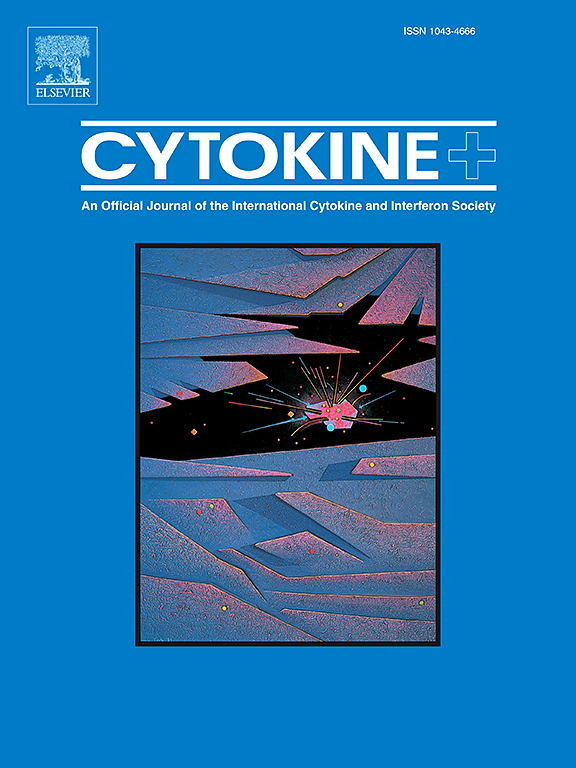ADAM17/ACE2相互作用介导镉致Wistar大鼠脑损伤和神经炎症
IF 3.7
3区 医学
Q2 BIOCHEMISTRY & MOLECULAR BIOLOGY
引用次数: 0
摘要
血管紧张素转换酶2 (ACE2)是肾素-血管紧张素系统的重要组成部分。崩解素和金属蛋白酶17 (ADAM17)是第一个发现的常见炎症细胞因子的脱落酶。由ADAM17促进的ACE2表达及其生物活性的变化与包括神经退行性疾病在内的多种疾病有关。本研究创新性地探讨了镉(Cd)诱导的神经毒性,并探讨了ADAM17/ACE2相互作用是否介导了镉诱导的脑损伤和神经炎症。为此,选取32只成年雄性Wistar大鼠,随机分组。8只大鼠作为对照组,其余24只实验大鼠Cd (5 mg/kg/d,口服,21 d);分为单独服用Cd (Cd组)、服用ADAM17抑制剂[TAPI-1, 10 mg/kg,腹腔注射](Cd/TAPI-1组)或口服维生素E, 100 mg/kg/d (Cd/vit组)。最终,采集大脑并进行生化、组织学和免疫组织化学(IHC)研究,以测量氧化应激和炎症标志物,进行组织病理学检查,并对ADAM17、ACE2和胶质纤维酸性蛋白(GFAP)进行免疫组化鉴定。Cd导致炎症和氧化应激标志物的生化紊乱,大脑皮层和海马退行性组织病理改变,ADAM17和GFAP表达增强,ACE2表达下调。维生素E在维持氧化/抗氧化平衡防御系统方面显示出优越的效果。然而,与维生素E治疗的部分改善相比,TAPI-1治疗更有效地缓解了大脑的生化和组织学变化。这些观察结果表明,氧化应激参与了cd介导的ADAM17和ACE2脱落的上调。由此得出结论,氧化应激至少在一定程度上导致当前cd诱导的脑损伤中adam17介导的ACE2裂解。本文章由计算机程序翻译,如有差异,请以英文原文为准。

ADAM17/ACE2 interaction mediates cadmium-induced brain damage and neuroinflammation in Wistar rats
Angiotensin-converting enzyme 2 (ACE2) is a critical component in the renin-angiotensin system. A Disintegrin And Metalloprotease 17 (ADAM17) is the first identified sheddase for common inflammatory cytokines. Changes in ACE2 expression and its biological activity facilitated by ADAM17 are involved in several diseases including neurodegenerative disorders. Herein, the study investigated an innovative viewpoint on cadmium (Cd)-induced neurotoxicity and explored whether ADAM17/ACE2 interplay mediated the Cd-induced brain injury and neuroinflammation. For this aim, 32 adult male Wistar rats were included and randomly grouped. Eight rats served as a control group and the remaining 24 experimental rats were exposed to Cd (5 mg/kg/day, orally, 21 days); assigned as either Cd-alone (Cd group), received ADAM17 inhibitor [TAPI-1, 10 mg/kg, intraperitoneal] (Cd/TAPI-1 group), or received vitamin E, 100 mg/kg/d, orally (Cd/vit E group). Ultimately, the brains were harvested and exposed to biochemical, histological, and immunohistochemical (IHC) studies for measuring oxidative stress and inflammatory markers, histopathological examination, and for IHC identification of ADAM17, ACE2, and glial fibrillary acidic protein (GFAP). Cd resulted in biochemical disturbances in the inflammatory and oxidative stress markers, degenerative histopathological changes in the cerebral cortex and hippocampus, and enhanced ADAM17 and GFAP expression, meanwhile downregulated ACE2 expression. Vitamin E showed a superior effect in maintaining the oxidative/antioxidant-balanced defense system. However, the biochemical and histological changes in the brain were more effectively alleviated by TAPI-1 administration than by the partial improvement made by vitamin E therapy. These observations suggested that oxidative stress was involved in Cd-mediated upregulation of ADAM17 and ACE2 shedding. It was concluded that oxidative stress, at least in part, resulted in ADAM17-mediated ACE2 cleavage in the current Cd-induced brain damage.
求助全文
通过发布文献求助,成功后即可免费获取论文全文。
去求助
来源期刊

Cytokine
医学-免疫学
CiteScore
7.60
自引率
2.60%
发文量
262
审稿时长
48 days
期刊介绍:
The journal Cytokine has an open access mirror journal Cytokine: X, sharing the same aims and scope, editorial team, submission system and rigorous peer review.
* Devoted exclusively to the study of the molecular biology, genetics, biochemistry, immunology, genome-wide association studies, pathobiology, diagnostic and clinical applications of all known interleukins, hematopoietic factors, growth factors, cytotoxins, interferons, new cytokines, and chemokines, Cytokine provides comprehensive coverage of cytokines and their mechanisms of actions, 12 times a year by publishing original high quality refereed scientific papers from prominent investigators in both the academic and industrial sectors.
We will publish 3 major types of manuscripts:
1) Original manuscripts describing research results.
2) Basic and clinical reviews describing cytokine actions and regulation.
3) Short commentaries/perspectives on recently published aspects of cytokines, pathogenesis and clinical results.
 求助内容:
求助内容: 应助结果提醒方式:
应助结果提醒方式:


